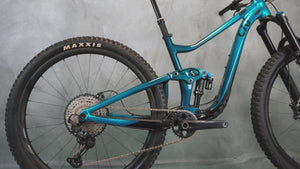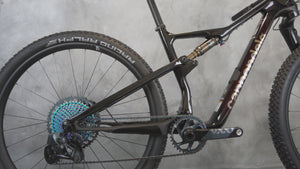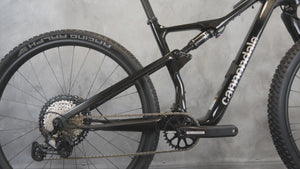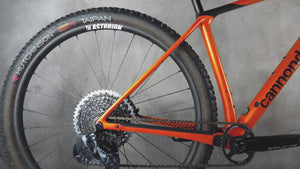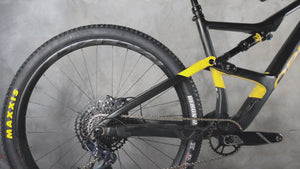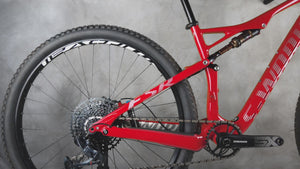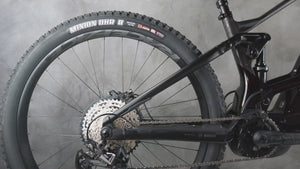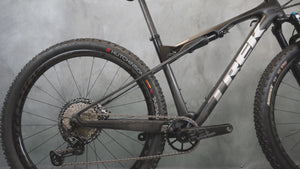Getting back on the bike after a long break
In this Article
Published on February 1, 2023

Prepare yourself Psychologically and Physically to Resume Cycling after a Long Break
Assess your Physical Condition
Before tightening the bolts on your bike, take the time to assess your current physical condition. A simple medical check-up can be beneficial, especially if the break has been particularly long. This will ensure that your body is ready to resume regular physical activity. Depending on your lifestyle, remember that it may take time for your cardiovascular fitness to return.
Assess your Mental State
Wanting to resume cycling is one thing; sometimes, preparing your body and mind is necessary. Let's face it, sports can be demanding, and getting back into it is never easy. It can even be discouraging at times. If you're unsure how to proceed and if you're afraid of experiencing discomfort, there's nothing better than seeking guidance from a sports coach. They can provide you with a tailored training program and valuable advice for a smooth and confident return to cycling.
Adjust Your Bike and Get Proper Gear
Never set off on a ride without ensuring that your bike is in perfect condition. Like you, it may need some adjustments. Check the condition of the tires, brakes, and gears.→ The Cyclist House's tips for maintaining your road bike. If necessary, have your bike serviced by a professional and take the opportunity to undergo a bike fit. There's nothing better than getting back into cycling with a perfectly adjusted bike. If you're considering investing in a new bike, explore the latest models and technological advancements to find the two-wheeler that best suits your needs and expectations.When it comes to gear, make sure you have a quality helmet, good sunglasses, gloves, and technical clothing suitable for cycling.
Use a Heart Rate Monitor and Bike Computer
Ideally, equip yourself with a heart rate monitor and a bike computer. During a comeback, it's important to know your pedaling cadence and heart rate, i.e., the number of heartbeats per minute. This will allow you to:
- Adjust the intensity of your training to stay within a target zone.
- Monitor your heart rate to help avoid overtraining. A consistently high heart rate may indicate that your body hasn't had enough time to recover, reducing the risk of overexertion and injury.
- Optimize weight loss: if your goal is weight loss, the heart rate monitor can help you maintain an exercise intensity that promotes fat burning. Working in the aerobic training zone effectively burns stored calories.
- Assess your cardiovascular condition. By monitoring your heart rate over time, you can assess the progress of your cardiovascular fitness. Improved heart efficiency often results in a reduction in resting heart rate.
- Customize your training. By understanding how your body responds to physical exertion, you can personalize your training sessions to make them more effective and tailored to your individual needs.
- Motivate yourself and set goals. Setting heart rate-based goals can be a source of motivation. You can work on staying within a specific range for a certain duration or try to reach intensity peaks during defined intervals.
- Potentially detect health issues. In some cases, abnormal variations in heart rate can be an early indicator of health problems. Regular heart rate monitoring can help detect anomalies and prompt consultation with a healthcare professional.
In summary, a heart rate monitor can be a valuable tool for optimizing your training, achieving your fitness goals, and maintaining a healthy level of physical activity. However, it's essential to use it wisely and combine this information with other fitness assessment elements.

Plan Suitable Routes
Instead of embarking on a complex route right away, start with short, flat routes. This will allow you to find your rhythm again and gradually acclimate your muscles to physical effort. The goal is to pedal smoothly without pushing your heart rate up.
Progress Gradually
The basic rule is not to burn yourself out right from the start. Be patient. Don't try to beat all records on the first day. Cycling is above all a pleasurable activity, and progress will come naturally. Gradually increase the duration and intensity of your rides to avoid physical overload. Start with endurance before focusing on specific training.
Some basic rules:
- Progress gradually. The key is consistency. Even before creating a training plan, think about progression and consistency. Training a little every day is better than training intensely once a week. Ease back into it with 25 to 30-minute rides, pedaling gently. Stay at 70% of your maximum heart rate.
- Gradually target effective exercises such as speed and strength work on the bike, as well as muscle strengthening. Try to ride at least twice a week to maintain your pedal stroke, even if it's for 10 to 15 minutes on a home trainer. Start with twenty minutes of speed work, then alternate with strength training in the next session and sprint phases in the one after. This will help tone your muscles and improve your cardiovascular fitness.
Important tips:
- Warm up properly: before each session, spend 5 to 10 minutes on a light warm-up to prepare your muscles.
- Stay hydrated: drink enough water before, during, and after each session.
- Listen to your body: if you experience intense or prolonged pain, take a break and consult a healthcare professional.
Remember that a gentle comeback is crucial to avoid injuries and maximize the enjoyment of your return to cycling.
Set Achievable Goals
If you conquered Ventoux a few years ago, you'll need patience to tackle the Giant of Provence again. To avoid discouragement, set yourself slightly more achievable and reasonable goals when you resume. In any sport, getting back into it is never easy. Don't expect to regain your previous level in a few days. Above all, seek pleasure. With a little effort and some pedal strokes, you'll be back in no time.
Find Riding Companions
Cycling can be a social activity. Joining cycling clubs in your area can provide you with the necessary support and make your rides more enjoyable. Riding companions can also share helpful tips for your return to cycling or simply boost your motivation.

Be Cautious on the Road
Road safety rules should never be neglected. Before cycling on public roads again, make sure you know and adhere to traffic regulations. This is particularly important if you haven't ridden for some time.
In conclusion, resuming cycling after a long break requires a progressive and thoughtful approach. By assessing your physical condition, choosing the right equipment, and planning suitable routes, you'll be on the path to a successful comeback. So don't wait any longer, hop on your dream Certified Pre-Owned bike without breaking the bank and rediscover the joy of riding in the great outdoors.

Chloé Wilhelem
Passionate about sports, Chloé decided to take up triathlon in 2017. She discovered cycling that same year and has been hooked ever since. She has a soft spot for climbing mountain passes. Between the Tourmalet and Mont Ventoux, her heart is torn. Her dream? To explore the world on a bike and continue to make a living from her profession, web writing. What does she think about refurbished bikes? The perfect solution to indulge yourself! Because that's what cycling is all about, isn't it?
- Cycling /
- Gravel /
- Road /
- Mountain bike






















